As dawn breaks over a new era of conscious consumerism, lab diamonds twinkle in the spotlight, offering a dazzling alternative to their earth-mined counterparts. Radiating with the same brilliant sparkle, these marvels of modern science have been captivating hearts and minds, challenging traditional perceptions of what constitutes a “real” diamond. But what sets these gleaming lab diamonds apart from their earth-mined counterparts? Let’s embark on a journey to uncover the fascinating world of lab-grown diamonds.
Short Summary
Lab diamonds are real diamonds created in a laboratory, with the same physical and chemical properties as mined diamonds.
Lab-grown diamond jewelry offers excellent value for money, while promoting ethical sustainability and traceability.
When shopping for lab grown diamond jewelry, it is important to understand stone quality and grading criteria, as well select a reputable retailer, such as R&J Jewelry & Loan.
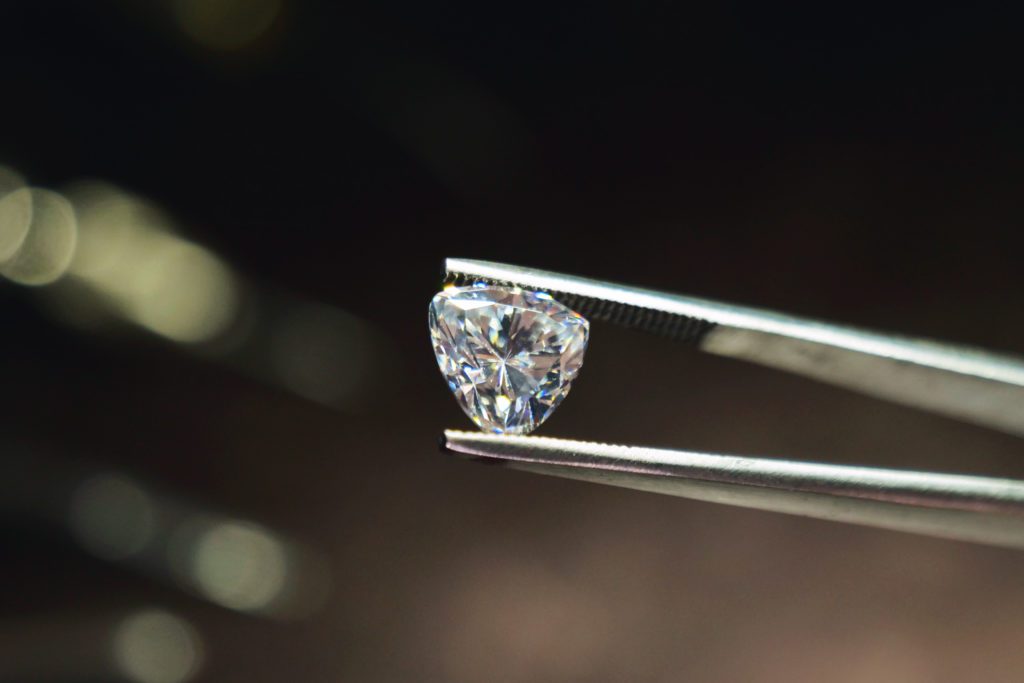
Understanding Lab Diamonds
In the heart of a laboratory, under the watchful eyes of skilled technicians, a miracle unfolds. A tiny seedling of carbon, nurtured by cutting-edge technology, slowly emerges a stunning diamond through metamorphosis. These are lab-grown diamonds, also known as lab-created diamonds, real diamonds created in a controlled environment, bearing the same chemical, physical, and optical characteristics as their mined counterparts.
But how does one transform a modest element like carbon into one of the most coveted gemstones on the planet?
Chemical Vapor Deposition (CVD)
The secret lies in a process known as Chemical Vapor Deposition (CVD). Imagine a painter meticulously adding layer upon layer of vibrant color onto a canvas. The CVD method mirrors this artistry, but instead of paint, it uses gas to deposit carbon atoms, forming the shape of a diamond crystal one layer at a time. The result? A lab-created diamond that matches the grandeur and allure of a naturally mined gemstone.
However, the CVD method isn’t without its drawbacks. While it is an economical and effective method for producing laboratory-created diamonds, it is a time-consuming process that doesn’t always guarantee success. Nevertheless, it’s a testament to human ingenuity, transforming simple carbon into sparkling diamonds.
High-Pressure High-Temperature (HPHT)
The second method to create these lab-grown marvels is High-Pressure High-Temperature (HPHT), a process that replicates the very conditions that birth diamonds deep within the Earth’s mantle. Like nature’s own diamond factory, the HPHT process subjects a carbon source to extreme temperatures and pressures, creating something like the intense conditions 100 miles beneath the Earth’s surface.
The result? Diamonds that are as real and as beautiful as their natural counterparts, yet are more cost-effective and require fewer resources for production. However, this method is not without its own challenges. While HPHT diamonds are of high quality, they may contain inclusions and flaws not present in natural diamonds, and may not possess the same clarity and brilliance as their naturally mined counterparts.
Comparing Lab-Grown and Mined Diamonds
Now that we’ve delved into the creation of lab-grown diamonds, let’s take a closer look at how they measure up against mined diamonds. To the untrained eye, lab-grown and mined diamonds are identical. They are chemically identical, share the same physical and chemical characteristics, and the only discernible difference lies in their respective origins.
But does this similarity extend to their value and pricing? At R&J Jewelry and Loan, we have a GG gemologist who can value your diamond and determine if it is a lab grown diamond or a natural diamond. Natural diamonds cost more and bring more money, but there are some affordable beautiful lab grown diamonds available.
Appearance and Composition
Visually, lab-grown diamonds are a spitting image of mined diamonds. Their shared brilliance and fire are a testament to their identical physical and chemical properties. But don’t take our word for it. Even experienced gemologists need specialized equipment to distinguish between these two types of diamonds.
The only difference here, however, lies in their origin. Mined diamonds are formed over billions of years, deep within the Earth’s mantle, while lab-grown diamonds are formed in a controlled environment within weeks or months. Despite this difference, both types of diamonds possess the same allure and grandeur, making them equally desirable.
Value and Pricing
When it comes to value and pricing, lab-grown diamonds have a clear advantage. They are approximately 30% more economical than mined diamonds. This is primarily because the production costs for lab-grown diamonds are significantly lower.
But what about the 4Cs – carat, cut, color, and clarity? The 4Cs are applicable to both lab-grown and mined diamonds, and lab-grown diamonds are officially graded utilizing these criteria. However, just like mined diamonds, it is possible for lab-grown diamonds to depreciate in value after purchase. The extent of this depreciation is challenging to ascertain, but what is certain is that a lab-grown diamond offers excellent value for money.
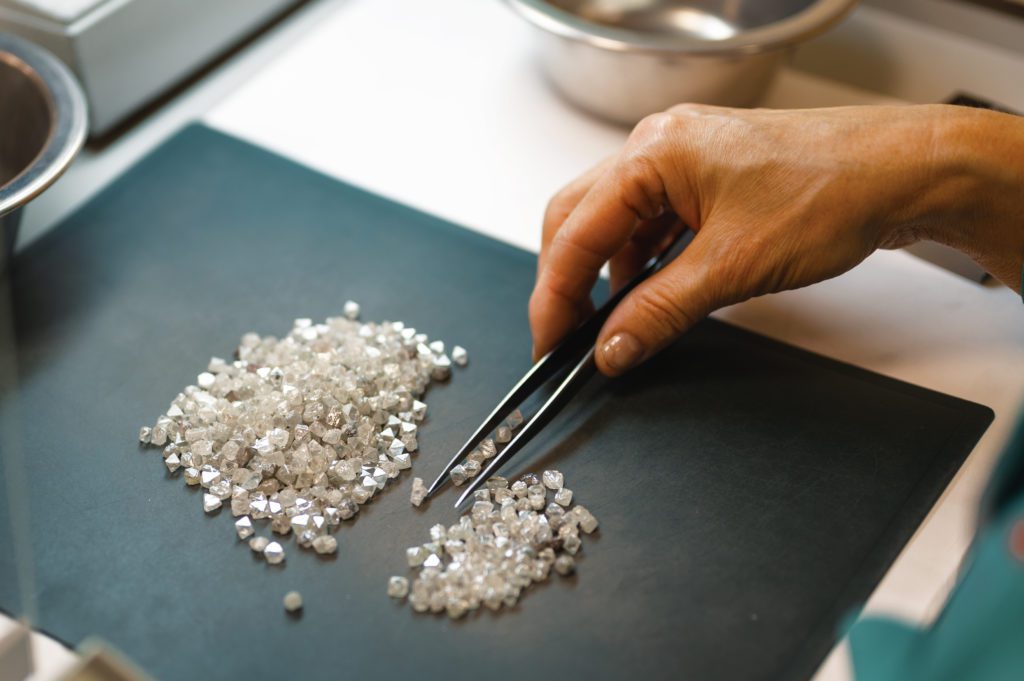
Why Choose Lab-Grown Diamonds?
Choosing lab-grown diamonds is more than just a financial decision. It’s a conscious choice that aligns with ethical and sustainable practices, as well as transparency and traceability in production.
Let’s delve deeper into why lab-grown diamonds are an ethical and appealing choice.
Ethical and Sustainable Practices
Ethics and sustainability are at the heart of lab-grown diamonds. Unlike mined diamonds, lab-grown diamonds are created without the detrimental environmental and social repercussions associated with diamond mining. This offers consumers peace of mind, knowing that their purchase doesn’t contribute to environmental degradation or unethical labor practices.
However, it’s important to note that while lab-grown diamonds are a more ethical and sustainable option compared to mined diamonds, they still require substantial resources to produce and have an environmental impact. This is a reminder that while lab-grown diamonds are a step in the right direction, continued innovation is needed to further reduce their environmental footprint.
Transparency and Traceability
Transparency and traceability are another compelling reason to choose lab-grown diamonds. Unlike mined diamonds, consumers can trace the origin of lab-grown diamonds, ensuring ethical sourcing and production. This level of transparency is still a contentious issue in the diamond industry, with some critics arguing there is a lack of precise data on ethical practices in the lab-grown diamond sector.
However, with companies like VRAI, consumers can rest assured knowing the origin of their diamonds. VRAI’s lab-grown diamonds originate from their above-ground, zero-emission foundry, furthering the sustainable process and solidifying the ethical and sustainable benefits offered by lab-grown diamonds.
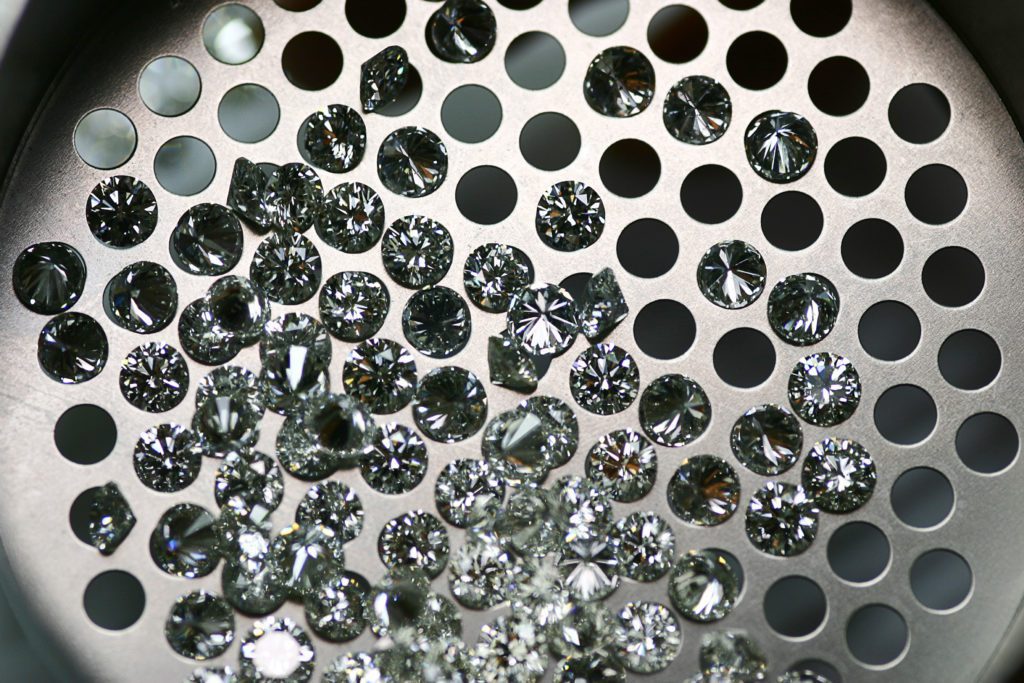
Lab Diamond Jewelry Styles and Trends
Lab-grown diamonds are not just ethical and affordable, they are also versatile and can be fashioned into various jewelry styles and trends. From classic engagement rings made with recycled gold to timeless earrings and chic necklaces, lab-grown diamonds cater to various tastes and preferences.
No matter what your style, lab-grown diamonds offer a unique and beautiful way to express yourself.
Engagement Rings
Lab-grown diamond engagement rings are gaining popularity among couples seeking a more ethical and affordable alternative to traditional mined diamonds. They come in a range of popular shapes and designs, from classic round brilliant cuts to unique pear and emerald cuts. Not only do these rings offer an ethical and sustainable choice, but they also provide excellent value for money.
Two of the most sought-after styles offered by VRAI, for instance, are the Signature Solitaire and Classic engagement ring. These rings, adorned with round brilliant, oval, and emerald shaped diamonds, are not just captivating to the naked eye alone, but they are also a testament to the couple’s commitment to ethical and sustainable practices.
Lab Diamond Stud Earrings
Stud earrings are a timeless piece of jewelry that never goes out of style. They are versatile, perfect for everyday wear and special occasions alike. Lab diamond stud earrings offer the same classic aesthetic, but with a modern twist. They are crafted with lab-grown diamonds, offering a more sustainable and affordable alternative to traditional diamond stud earrings.
Brands like Blue Nile, Kimai, Brilliant Earth, VRAI, and James Allen offer a range of lab diamond stud earrings to suit various styles and budgets. Whether you’re looking for a simple pair for everyday wear or a statement piece for a special occasion, there’s a pair of lab diamond stud earrings out there for everyone.
Necklaces and Pendants
Lab diamond necklaces and pendants are another popular choice among consumers. They offer a range of styles, from simple solitaires to intricate designs, catering to every taste and occasion. Whether you prefer a minimalist pendant for a subtle touch of sparkle or an extravagant necklace for a glamorous night out, there’s a lab diamond necklace or pendant to suit your style.
These necklaces and pendants are not just beautiful, they are also a testament to the wearer’s commitment to ethical and sustainable practices. By choosing lab diamond necklaces and pendants, consumers are making a conscious choice to support a more sustainable and ethical diamond industry.
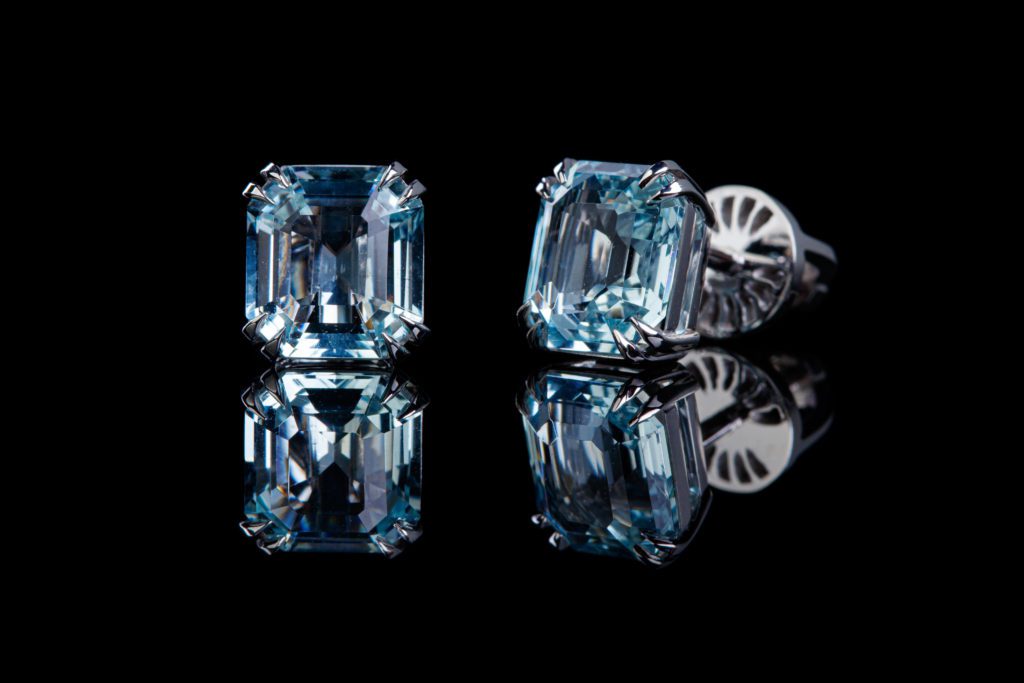
Alternatives to Lab-Grown Diamonds
While lab-grown diamonds offer a more sustainable and ethical alternative to mined diamonds, there are other alternatives available for those seeking a more affordable option. These include cubic zirconia and moissanite, both of which offer their own unique advantages and characteristics as natural diamond counterparts.
Cubic zirconia is a synthetic diamond simulant that is much less expensive than diamonds.
Cubic Zirconia
Cubic zirconia is a synthetic gemstone that closely resembles a diamond but is less durable and less brilliant. Despite this, it is a popular alternative to diamonds due to its affordability and durability. While it may not have the same hardness or refractive index as a diamond, cubic zirconia is a practical choice for those seeking a budget-friendly alternative.
It’s important to note, however, that cubic zirconia does not have the same mineral composition as a diamond. It is made of zirconium dioxide, and while it can resemble a diamond to the untrained eye, it lacks the unique physical and chemical properties that make diamonds so coveted.
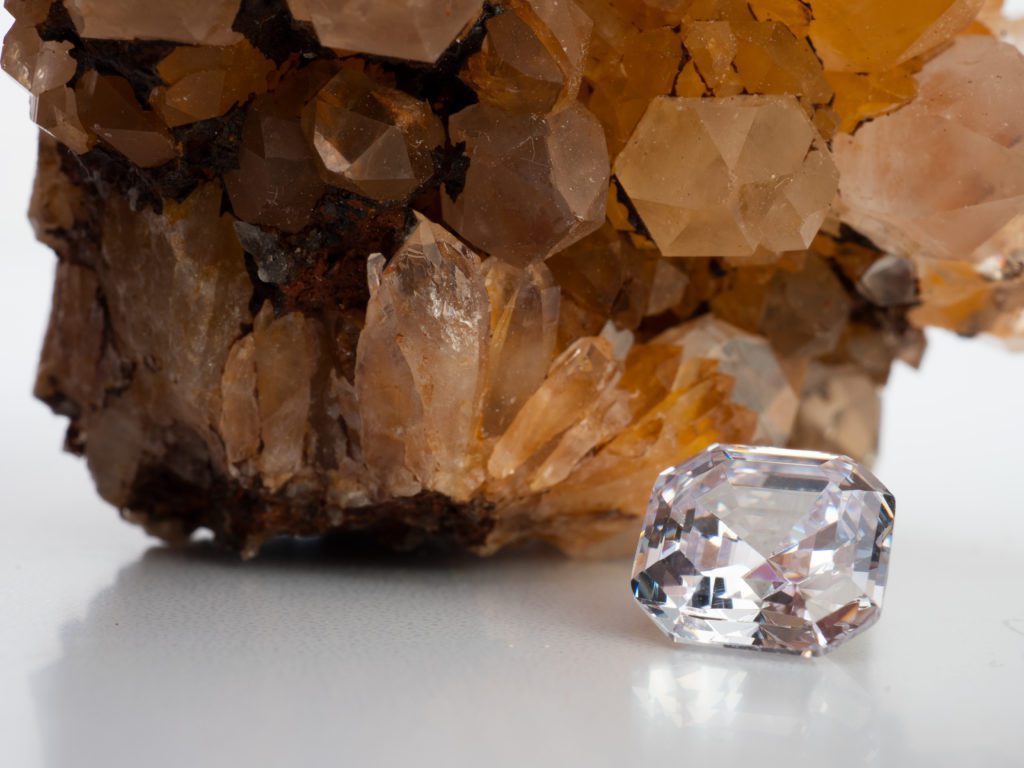
Moissanite
Another alternative to diamonds is moissanite, a lab-created gemstone made of silicon carbide. Moissanite offers several advantages over diamond simulants like cubic zirconia. It has a higher refractive index, giving it more fire and brilliance, and it is also more durable than cubic zirconia, with a hardness rating of 9.25 on the Mohs scale.
However, while moissanite may resemble a diamond, it is important to remember that it is not a diamond. Both lab-grown and naturally mined diamonds are composed of carbon, while moissanite is composed of silicon carbide. Nevertheless, it is a viable alternative for those seeking a more affordable and resilient gemstone.
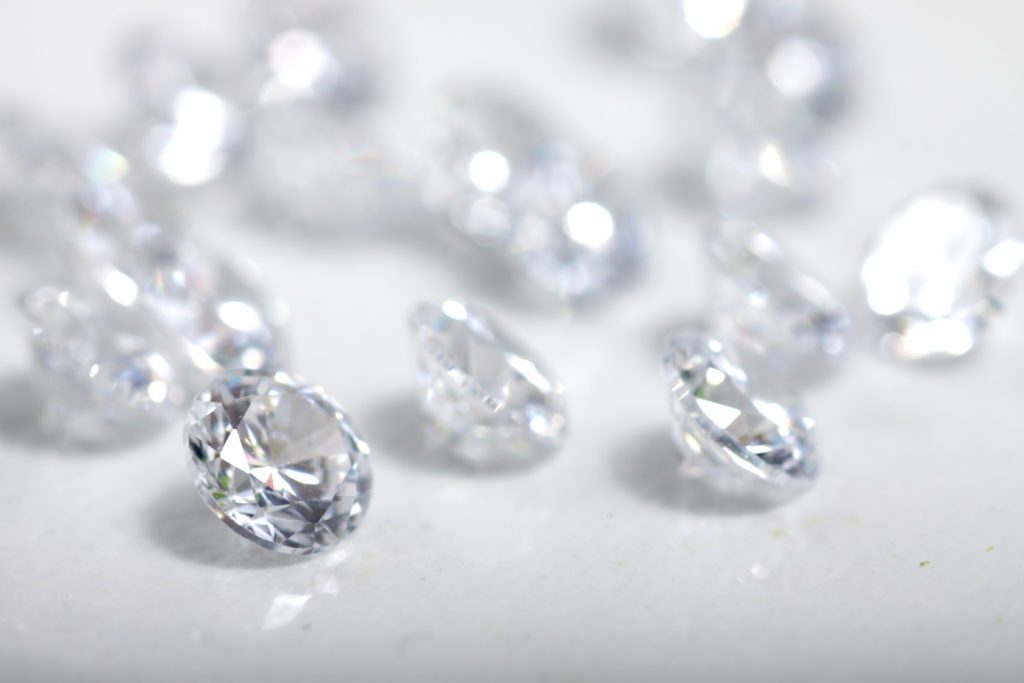
How to Shop for Lab-Grown Diamond Jewelry
Now that we’ve explored the world of lab-grown diamonds, let’s delve into how to shop for lab-grown diamond jewelry. From understanding stone quality and grading to choosing a reputable retailer, let’s equip you with the information you need to make an informed purchase.
When shopping for lab-grown diamond jewelry, it’s important to understand the quality of the jewelry.
Stone Quality and Grading
When shopping for lab-grown diamond jewelry, understanding the 4Cs – carat, cut, clarity, and color – is crucial. These are the four factors that determine the quality and value of a diamond.
-
Carat: refers to the weight of the diamond
-
Cut: refers to how well the diamond has been cut from its rough form
-
Clarity: refers to the absence of inclusions or blemishes
-
Color: refers to the presence of any color in a diamond
In addition to the 4Cs, it’s also important to consider several factors in the grading of the diamond. Grading is an assessment of the diamond’s quality based on the 4Cs. Lab-grown diamonds are officially graded using these criteria, like mined diamonds. For accurate grading, look for diamonds certified by reputable gemological laboratories such as the Gemological Institute of America (GIA) or the International Gemological Institute (IGI).

Selecting a Reputable Retailer
Choosing a reputable retailer is just as important as understanding the quality and grading of a lab-grown diamond. A trustworthy retailer can guarantee the lab-grown diamond is of superior quality and ethically sourced. They can also provide certifications from reliable gemological laboratories, confirming the authenticity and quality of the diamond.
When selecting a retailer, consider their reputation, customer service, return policy, and the quality of the diamonds they offer. It’s also essential to ensure the retailer provides information about the origin of the diamonds and offers certifications from reputable gemological laboratories.

One such trusted retailer is R&J Jewelry and Loan. Offering a wide selection of lab-grown diamond jewelry, they are a testament to the growing popularity and acceptance of lab-grown diamonds in the jewelry industry. R&J Jewelry and Loan not only provides an extensive range of lab diamond jewelry, but they also offer competitive prices and superior customer service.
Whether you’re looking for engagement rings, lab diamond stud earrings, or necklaces and pendants, R&J Jewelry and Loan has something to suit your taste and budget. By choosing to purchase from R&J Jewelry and Loan, you’re not just buying a piece of jewelry, you’re also supporting ethical and sustainable practices in the diamond industry.
Summary
As we conclude our journey into the captivating world of lab-grown diamonds, it’s clear that these glistening gems are more than just a trend. They are a testament to human ingenuity, a symbol of ethical and sustainable practices, and a beacon of transparency and traceability in an industry often shrouded in mystery. Whether you’re looking for an engagement ring, a pair of earrings, or a statement necklace, lab-grown diamonds offer a dazzling alternative to traditional mined diamonds. As consumers, the choice is ours to make. We can choose to support an industry that values ethical sourcing, environmental sustainability, and transparent practices. By choosing lab-grown diamonds, we’re not just making a style statement, we’re making a statement about the kind of world we want to live in.
Frequently Asked Questions
Are lab diamonds as good as real diamonds?
Lab grown diamonds have identical physical, chemical, and optical properties as mined diamonds, making them just as good. They exhibit the same fire, scintillation, and sparkle and are indistinguishable from mined diamonds.
Lab grown diamonds are a great alternative to mined diamonds. They are more affordable, and ethically sourced, making them a more sustainable choice. They are also more accessible, as they can be more accessible.
What are the disadvantages of lab-grown diamonds?
Lab-grown diamonds have a greater supply, which makes them less valuable, meaning any money spent on them now will unlikely be recouped later.
Natural diamonds, in contrast, are more of an investment because they remain a rare commodity.
How much cheaper are lab diamonds?
Lab-grown diamonds are typically 50-70% cheaper than natural, mined diamonds, making them an affordable alternative.
This makes them an attractive option for those looking for a diamond on a budget. They are also ethically sourced, as they are not mined from the earth, and are often considered more environmentally friendly.
What are lab-grown diamonds?
Lab-grown diamonds are genuine diamonds created in a laboratory environment with the same chemical, physical and optical characteristics as mined diamonds, making them a sustainable alternative.
Lab-grown diamonds are a great choice for those looking for an ethical and sustainable alternative to mined diamonds. They are created in a laboratory, using the same chemical, physical and optical characteristics as mined diamonds. This means they are just as good as they are.
How are lab-grown diamonds created?
Lab-grown diamonds are created through two processes: Chemical Vapor Deposition (CVD) and High-Pressure High-Temperature (HPHT). Both methods produce diamonds that share the same chemical and physical properties as natural diamonds.
